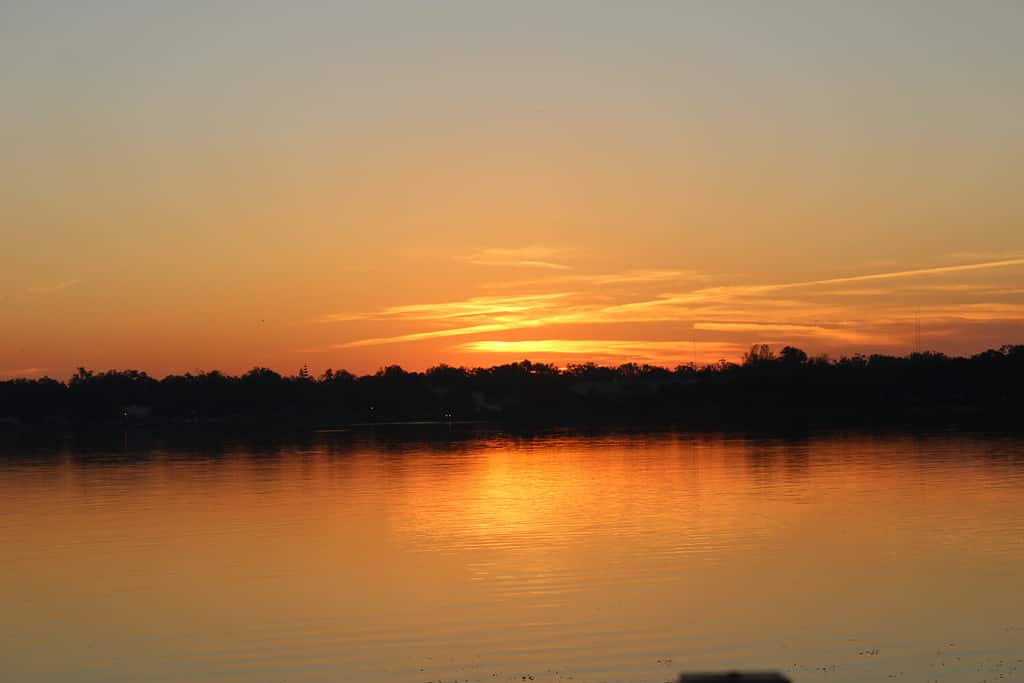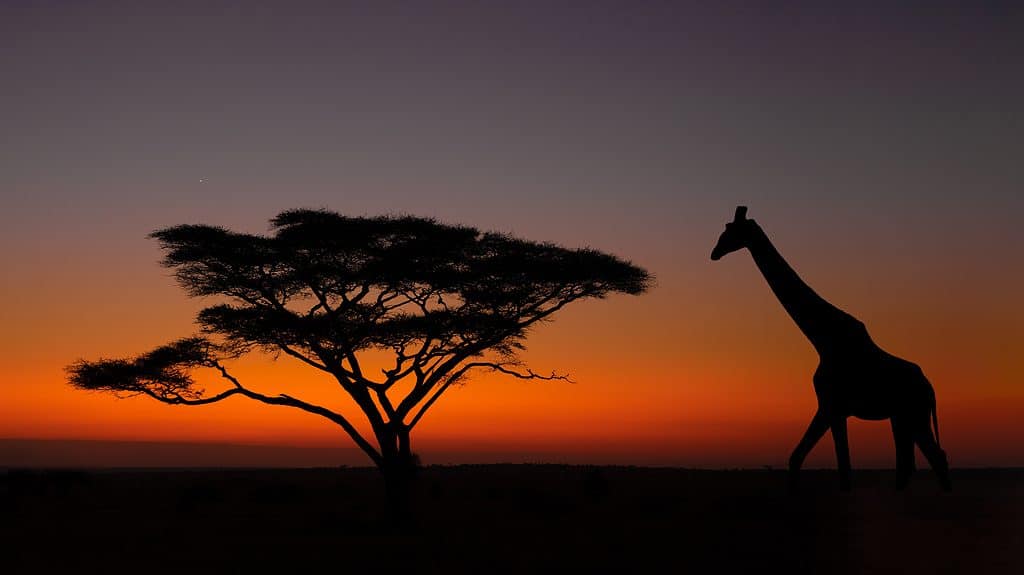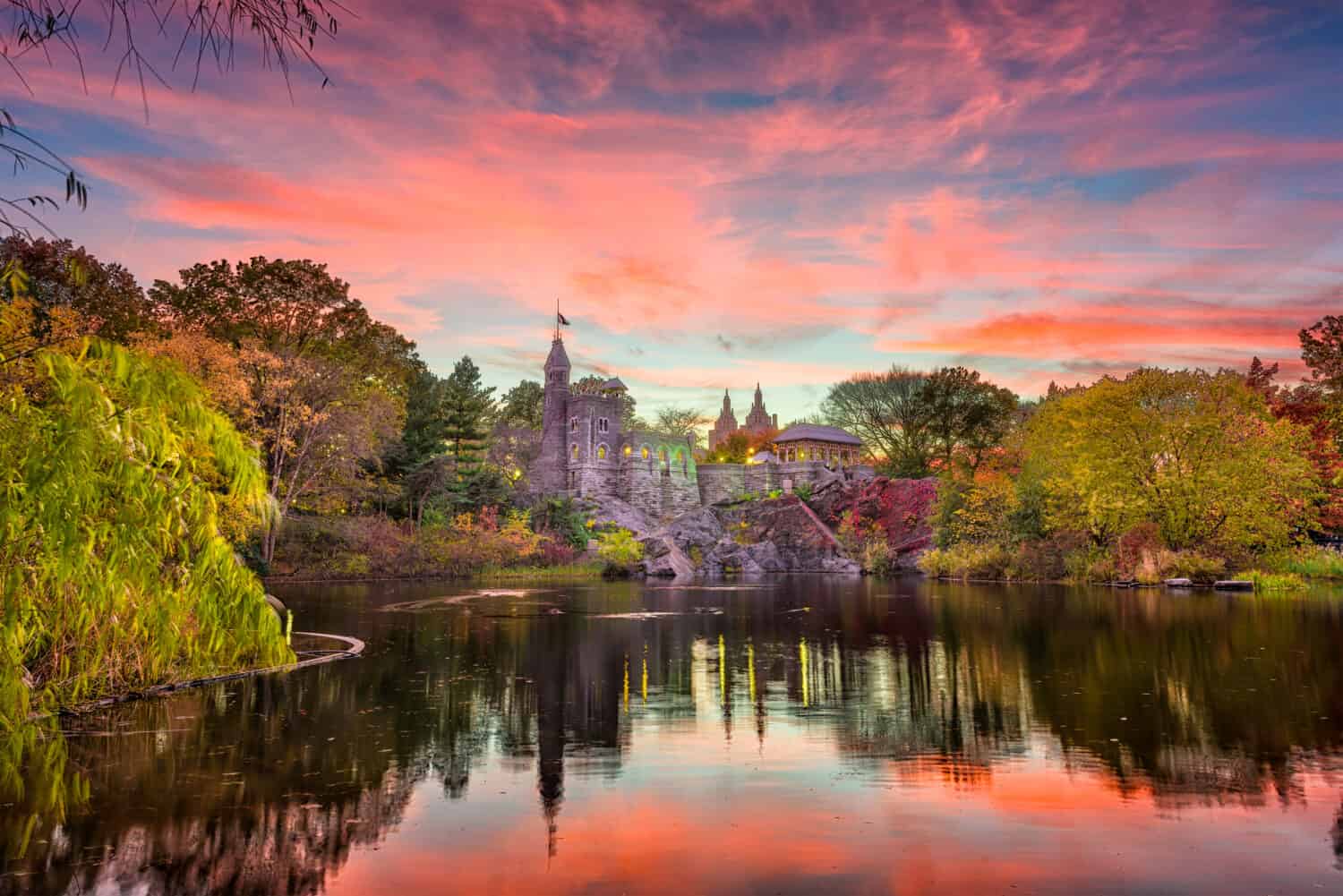As the day fades away, we find ourselves caught between light and darkness. This magical time is commonly referred to as twilight. A time when the sky becomes washed in color, crickets start chirping, and the nighttime animals begin to emerge. But where does dusk fit into the equation? Twilight vs. dusk are different phases, with the latter only occurring as the day ends. Follow along to learn the key differences and how to tell them apart.
Twilight vs. Dusk
| Twilight | Dusk |
|---|---|
| Various positions of the sun below the horizon | When the sun is 18 degrees below the horizon |
| Includes both morning twilight and evening twilight | Marks the end of the day |
| It consists of 3 stages: civil, nautical, and astronomical twilight | Usually lasts 70 to 100 minutes |
Twilight and dusk mark the transition between day and night. Dusk is the time after sunset when the sky gradually gets darker. It refers to the partial darkness following sunset. Twilight is a broader term, including the light before sunrise and after sunset. Both of which are times when the sun is below the horizon. The sun’s position below the horizon determines what phase of twilight’s occurring.
Twilight

In some languages, twilight translates to mean “twice darkness”.
©iStock.com/Allen Allnoch
The noun twilight refers to the light from the sky when the sun is below the horizon; it’s a compound word formed by combining “twi” and “light.” It’s possible “twi” refers to twilight occurring in the morning and evening. Or the word could signify “half” light rather than referring to twilight occurring twice a day. Similar expressions can be found in other languages.
The Danish word for “twilight” is “tusmørke,” translating to “twice gloom” or “twice darkness.” Tusmørke traces back to Old Norse, a language spoken in the Nordic region during the Viking Age and the Middle Ages. “Tús” means “twice” or “double.” “Mørki” means “darkness” or “gloom.” There’s also “twilicht” in Middle Flemish, “tweelicht” in Dutch, and “twelicht” or “zwischerliecht” in Middle High German.
Is Twilight Evening or Morning?

Twilight happens when the day begins and when the day ends.
©Arnold.Petersen/Shutterstock.com
Twilight is Earth’s transition from day to night or from night to day. While twilight usually refers to the evening hours, it’s occasionally used to describe the morning transition. Here’s how to use the word in a sentence: “As the sun began to set, shades of pink began creating a magical twilight sky,” or, “The landscape is particularly enchanting during the early twilight hours.”
Sometimes light pollution makes it difficult to see twilight as it’s truly occurring. One study measured how bright the sky was before sunrise in different places over several years. They used special devices to measure the brightness and looked at different angles from directly overhead. They found that pollution from lights and air can make the sky seem brighter even before the sun rises. This can affect the length of time between night and morning.
The 3 Types of Twilight

The position of the sun determines what stage of twilight is occuring.
©Shiloh GIbson/Shutterstock.com
Twilight comes in three stages; civil, nautical, and astronomical. Civil twilight provides just enough light for outdoor activities. Nautical twilight is much darker and reveals brighter stars. Astronomical twilight happens when the sky’s completely dark. There’s also a phenomenon called “anti-twilight,” which refers to the colorful glow in the sky after sunset, often appearing in shades of pink or purple.
Civil Twilight
Civil twilight begins and ends when the sun is 6 degrees below the horizon. During civil twilight, we can see bright stars and planets like Venus. The twilight illumination is good enough to distinguish both celestial and terrestrial objects, as long as the weather’s good. The horizon is clear at the start of morning civil twilight or the end of evening civil twilight.
Back in the day, civil twilight wasn’t just a matter of stargazing or enjoying the outdoors. It had a big impact on work productivity. Once things got dark, you had no choice but to retreat indoors. Not everyone agreed on when this civil twilight should begin. There were debates in the 19th century about its exact end time, with varying definitions ranging from 6 to 8 degrees below the horizon.
Nautical Twilight
Imagine what it’d be like having twilight all night long. It’s possible in some parts of the world. If you’re in higher latitudes, especially around the summer solstice, nautical twilight can last throughout the night.
Nautical twilight begins and ends when the sun is 12 degrees below the horizon. During nautical twilight, the brighter stars become visible, which makes it easier for sailors to find their way around. It’s like nature’s GPS. In favorable weather conditions, it is possible to make out the outlines of objects on land. However, for more detailed outdoor tasks, artificial light may be necessary.
During polar nights, extended periods of darkness when the sun remains below the horizon, there can be nautical twilight. Brief periods of astronomical and nautical twilight can occur, breaking up the prolonged darkness. Even though the sun doesn’t rise above the horizon, there can be short intervals when the angle of the sun is low enough to create a faint illumination in the sky.
Astronomical Twilight
At mid-latitudes, astronomical twilight typically lasts around 30 minutes to one hour. However, twilight can last throughout the entire night during the summer solstice at high latitudes. Astronomical twilight can occur in the morning or evening. It’s the period where the sun’s center is 18 degrees below the horizon. The sky is very dim, and most people would consider it fully dark.
Even with light pollution, the sky may seem dark during this faint twilight. Without a visible horizon, one can see faint stars or planets with the naked eye. Astronomers can use this time to study individual sources of light using spectroscopic analysis, which is a great way to learn about stars and the stuff between them. The complex process breaks down light into different colors, like how a prism splits up white light into a rainbow.
Dusk

Only occurring once a day, dusk begins as the sun starts to set.
©Nagel Photography/Shutterstock.com
Dusk is the time of day when the sun begins to set. Here’s how to use the term in a sentence, “I enjoy the peaceful atmosphere during dusk as the sun sets and the sky turns orange.” Sometimes the term’s used interchangeably as another word for evening twilight. However, true dusk occurs at the darkest stage of twilight, specifically at the end of astronomical twilight after sunset and just before nightfall. The sky can have various colors, such as orange and red, and you might be able to see stars and planets depending on weather conditions.
Dawn

When the night transitions into daytime, it’s dawn.
©Peter van Dam/Shutterstock.com
Dawn refers to the transition from night to day. It’s the period of time just as the sun is rising. Dawn starts with a bit of darkness, then the sky illuminates, becoming brighter with each ray of the sun. The verb “dawn” means “to become day” or “grow light in the morning.” In a figurative sense, “dawn” can also mean the first opening or expansion of anything. You can use this term in a sentence such as “It’s always darkest before the dawn” Or “At dawn, the day will begin anew.” Daygleam, day spring, dawning; there are a lot of words to describe this time of day.
Final Thoughts on Twilight vs. Dusk
Now you know about the different parts of the day-to-night shift or twilight vs. dusk. Twilight covers morning and evening. But dusk only occurs after sunset, marking the end of the day. When the sun is 18 degrees below the horizon, it’s dusk. Dusk is shorter than twilight, usually stealing the sky for about 70 to 100 minutes. But twilight can last for hours as it transitions through each stage. And finally, we also touched on what dawn means. Dawn is a term to describe the transition from dark to light that happens in the morning. It’s a time of day that inspires birds to sing their lovely morning tunes.
Thank you for reading! Have some feedback for us? Contact the AZ Animals editorial team.








